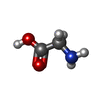+Search query
-Structure paper
| Title | Posttranslational Modifications Mediate the Structural Diversity of Tauopathy Strains. |
|---|---|
| Journal, issue, pages | Cell, Vol. 180, Issue 4, Page 633-644.e12, Year 2020 |
| Publish date | Feb 20, 2020 |
 Authors Authors | Tamta Arakhamia / Christina E Lee / Yari Carlomagno / Duc M Duong / Sean R Kundinger / Kevin Wang / Dewight Williams / Michael DeTure / Dennis W Dickson / Casey N Cook / Nicholas T Seyfried / Leonard Petrucelli / Anthony W P Fitzpatrick /  |
| PubMed Abstract | Tau aggregation into insoluble filaments is the defining pathological hallmark of tauopathies. However, it is not known what controls the formation and templated seeding of strain-specific structures ...Tau aggregation into insoluble filaments is the defining pathological hallmark of tauopathies. However, it is not known what controls the formation and templated seeding of strain-specific structures associated with individual tauopathies. Here, we use cryo-electron microscopy (cryo-EM) to determine the structures of tau filaments from corticobasal degeneration (CBD) human brain tissue. Cryo-EM and mass spectrometry of tau filaments from CBD reveal that this conformer is heavily decorated with posttranslational modifications (PTMs), enabling us to map PTMs directly onto the structures. By comparing the structures and PTMs of tau filaments from CBD and Alzheimer's disease, it is found that ubiquitination of tau can mediate inter-protofilament interfaces. We propose a structure-based model in which cross-talk between PTMs influences tau filament structure, contributing to the structural diversity of tauopathy strains. Our approach establishes a framework for further elucidating the relationship between the structures of polymorphic fibrils, including their PTMs, and neurodegenerative disease. |
 External links External links |  Cell / Cell /  PubMed:32032505 / PubMed:32032505 /  PubMed Central PubMed Central |
| Methods | EM (helical sym.) |
| Resolution | 3.3 - 4.3 Å |
| Structure data | EMDB-21200, PDB-6vh7: EMDB-21201, PDB-6vha: EMDB-21207, PDB-6vhl:  PDB-6vi3: |
| Chemicals |  ChemComp-GLY: |
| Source |
|
 Keywords Keywords | PROTEIN FIBRIL / Pathological amyloid fibril / cross-beta fold / parallel beta-sheets / Pathological amyloid fibril cross-beta fold parallel beta-sheets |
 Movie
Movie Controller
Controller Structure viewers
Structure viewers About Yorodumi Papers
About Yorodumi Papers









 homo sapiens (human)
homo sapiens (human)